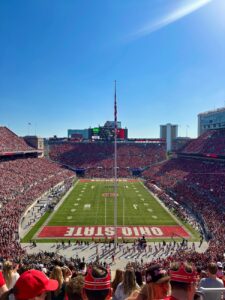The new 2022 UDOT agreements phases.

The Utah Department of Transportation (UDOT) has reached an agreement on theconstruction of a $550 million gondola as the preferred alternative for Little Cottonwood Canyon over the objection of some concerned citizens. UDOT evaluated over 145 alternatives to alleviate congestion on State Road 210 into the popular canyon during the ski season. In the end, they agreed upon the construction of a gondola with phased implementation as the best alternative. The first phase will be an enhanced bus system near the mouth of the canyon which will run every five minutes, as well as a 2500 car parking garage near the mouth of the canyon. The gondola itself will include cabins which accommodate up to 35 people, with a cabin being available to canyon goers every two minutes.
The $550 million cost will consist of tolling infrastructure, transit parking, snow sheds, addressing trailhead parking, the widening of Wasatch Boulevard and the yearly cost of $4 million for operations and maintenance. If summer services were to be included, maintenance and operation would cost an additional $3 million per year.
During the ski season, peak congestion periods for the canyons are 8-10 am and 3-5pm. UDOT claims that the implementation of a gondola will not only increase Utah’s air quality, but also protect watershed and increase the quality of life for canyon goers by reducing the number of private vehicles on the road.
Some concerned citizens, including Carl Fisher, the executive director at Save Our Canyons, said the gondola is not the answer for the Little Cottonwood Canyon traffic dilemma.
“In a nutshell, we don’t believe that the process that the state has been going through
accurately identifies the challenges the Wasatch Mountains are confronted with from a year-round perspective,” Fisher said.
Fisher argued that the issue isn’t just getting people through the canyon, but to the canyon itself.
“We believe you have to capture those people near their points of origin and convert
them to transit users well away from the mouths of the canyon,” he said.
Justin Van Dura, the UDOT project manager for the gondola said all alternatives have been thoroughly studied.
“The fact is, we’ve analyzed it, we’ve been at this for four and a half years, we’ve left no stone unturned.” Van Dura said UDOT evaluated an enhanced transit system away from the mouths of the canyon, but in the end, the financial cost would be too great. “It would increase the cost from fourteen million to forty million a year,” Van Dura said.
Another criticism of the gondola is that it only addresses traffic congestion caused during the ski season, “We don’t really think the gondola addresses the challenges we’re confronting 365 days a year,” said Fisher
“It’s true, we aren’t looking at summer services,” said Van Dura, “because we don’t see the same peak congestion hours.” Van Dura said that during the summer seasons, there are many kinds of canyon visitors including bird watchers, hikers, mountain bikers, brunch goers and many more.
According to UDOT, these hobbyists are visiting at all different hours of the day, and therefore, the traffic is far steadier than it is in the winter.
For more information about the Little Cottonwood Canyon Gondola and the arguments for and against it, you can visit Save Our Canyons at saveourcanyons.org/the-latest/mediaroundup-the-truth-about-the-proposed-gondola-in-little-cottonwood-canyonandUDOT at udot.utah.gov/connect/2022/08/31/udot-identifies-gondola-b-as-thepreferred-alternative-in-little-cottonwood-canyon/.




